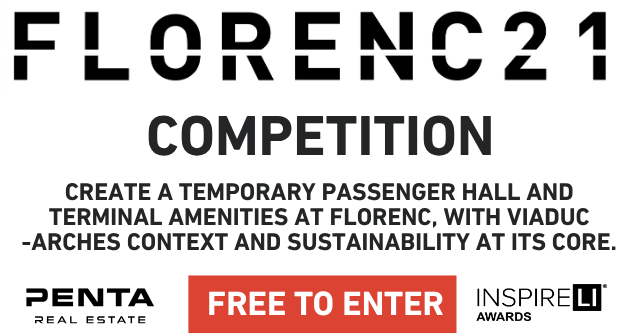Lookout and Winery Pezinok
Idea projektu
Hlavným cieľom projektu bolo navrhnúť rozhľadňu a vinárstvo v meste Pezinok, v oblasti Starej hory, ako obohatenie Malokarpatskej vinohradníckej oblasti. Stavba by mala slúžiť predovšetkým na prilákanie širšej verejnosti, ktorá by prejavila väčší záujem o víno a vinohradníctvo, čo by malo pôsobiť aj na zvýšenie cestovného ruchu v meste Pezinok a jeho okolí. Návrh bol veľkou výzvou vzhľadom na svahovitý terén pozemku určeného na výstavbu vinárstva. Celé dielo je rozdelené do troch fáz tvorby. Prvou je architektonický návrh, ktorého výsledkom je architektonická štúdia. Druhá fáza pozostáva z prípravy projektových výkresov pre územné konanie a tretia z projektových výkresov pre stavebné povolenie. Návrh reaguje na požiadavky klienta, typ prostredia, klimatické podmienky a potenciály vyplývajúce z okolitých podnetov územia. Návrh obsahuje budovu vinárstva a zahŕňa aj vyhliadkovú plošinu a promenádu. Navrhovaná stavba je riešená bezbariérovo s čo najmenším zásahom do okolitého prostredia, ale s výraznou priznanou materialitou, ktorá vytvára kontrast. Budova vinárstva pozostáva z kaviarenského priestoru, variabilného priestoru, skladu vína, relaxačných exteriérových, ale aj atmosférických degustačných priestorov pivnice. Vízia architektonického riešenia vinárstva, ktoré vystupuje v areáli Starej hory ako živý organizmus, je inšpirovaná biomimikou v architektúre. Tento koncept vychádza z princípov prírody, kde dlhý kmeň viniča evokuje a interpretuje ako vstupný chodník do budovy a zároveň ako nosnú os, od ktorej sa rozvetvuje hlavná časť budovy. Tieto vetvy symbolizujú rôzne funkčné jednotky vinárstva a zároveň tvoria postupný prechod k hlavnej časti budovy, vyhliadkovej streche, ktorá ponúka panoramatický výhľad na okolitú krajinu. Celá budova, jej vzhľad aj funkcie, boli inšpirované pestovaním a rastom hrozna v organizovaných vinohradoch. Celý princíp je aplikovaný nielen na vinárstvo ako celok, ale aj na detaily, ktoré sa postupne odhaľujú, tak ako sa hrozno odhaľuje spoza listov
Popis projektu
V celej budove sa odohrávajú tri scenáre. Prvý sa odohráva na prvom poschodí. Celé poschodie má poloverejný charakter vďaka interiéru slúžiacemu návštevníkom počas prevádzkových hodín a terase, ktorá je prístupná aj v čase, keď budova nie je v prevádzke. Poschodie je rozdelené na dva samostatne fungujúce symetrické celky, ktoré sa v prípade potreby dajú aj prepojiť, aby sa zvýšila kapacita pre návštevníkov. V prvej časti sa nachádza kaviareň. Druhá časť nemá špecifickú funkciu, je tu veľký variabilný priestor. Druhý scenár sa odohráva na pochôdznej streche, ktorej súčasťou je lávka vedúca priamo z cesty. Strecha má pravidelný sled rôznych funkcií a atrakcií, ktoré boli inšpirované spôsobom vedenia hrozna. Nachádza sa tu množstvo zelených plôch v podobe trávnika a nízkych zelených plôch. Striedajú sa tu súkromné oddychové zóny so skupinovými alebo atrakciami pre deti, ako sú betónové odpočívadlá, hojdačky, ležadlá, lavičky a tiež veľké skupinové posedenie s ohniskom. Tretí a posledný scenár sa odohráva na prvom podzemnom podlaží, ktoré môžeme nazvať vínnou pivnicou. Návrh sa týka vytvorenia správnej atmosféry danej vínnej pivnice so správnym technickým riešením na vhodné uskladnenie vína. Všetky tri scenáre spolu tvoria jeden multifunkčný celok slúžiaci ako vinotéka s vyhliadkovými, degustačnými, pivničnými, relaxačnými a variabilnými priestormi.
Technické informácie
Celá budova je založená na základovej doske s priehlbinami pod železobetónovými stenami budovy. Hrúbka železobetónovej základovej dosky je 350 mm a základová škára sa nachádza vo výške -4,185 mm a v priehlbinách vo výške -4,260 mm. Všetky zvislé nosné konštrukcie budovy sú navrhnuté zo železobetónu. Nosné železobetónové obvodové steny na prvom poschodí majú hrúbku 300 mm a na prízemí majú hrúbku 500 mm. Všetky stropné konštrukcie v budove sú zo železobetónových monolitických bezprievlakových stropných dosiek s hrúbkou 300 mm. Všetky stropné dosky sú vystužené v jednom smere a zapustené do nosných zvislých konštrukcií. Jednovrstvová extenzívna konštrukcia zelenej strechy obsahuje vrstvu so sklonom 2 % na odvodnenie strechy. Budova má jednovrstvovú plochú strechu. Nosnú konštrukciu tvorí monolitická železobetónová doska s hrúbkou 300 mm. Tepelnú izoláciu tvoria dve vrstvy expandovaného polystyrénu EPS s celkovou hrúbkou 230 mm a 140 mm. Vrchný polystyrén je šikmý s hrúbkou 20 až 140 mm. Pochôdznu strechu tvorí rovnaká skladba nosnej konštrukcie a povrch tvorí liata, protišmyková, pohľadová betónová podlaha. Strecha objektu je bez parapetu, parapet sa nachádza len na extenzívnej zelenej streche nad komunikačným jadrom, ktorá vedie priamo na pohľadovú strechu objektu. Nenosné vnútorné priečky v budove tvoria dvojvrstvové sadrokartónové panely, medzi ktorými je nosná konštrukcia sadrokartónovej priečky, ktorá je montážnym profilom. V celom suteréne sú na stropoch nenosné betónové klenby.
Štítok
Rady študentom


